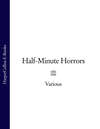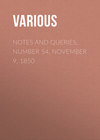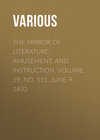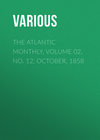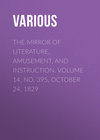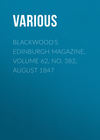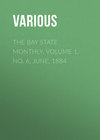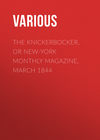Loe raamatut: «The Atlantic Monthly, Volume 10, No. 57, July, 1862», lehekülg 17
The Pearl of Orr's Island. A Story of the Coast of Maine. By MRS. HARRIET BEECHER STOWE, Author of "Uncle Tom's Cabin," "The Minister's Wooing," etc. Boston: Ticknor & Fields. 12mo.
Mrs. Stowe is never more in her element than in depicting unsophisticated New-England life, especially in those localities where there is a practical social equality among the different classes of the population. "The Pearl of Orr's Island," the scene of which is laid in one of those localities, is every way worthy of her genius. Without deriving much interest from its plot, it fastens the pleased attention of the reader by the freshness, clearness, and truth of its representations, both of Nature and persons. The author transports us at once to the place she has chosen as the scene of her story, makes us as familiarly acquainted with all its surroundings as if we had been born and bred there, introduces us to all the principal inhabitants in a thoroughly "neighborly" way, and contrives to impress us with a sense of the substantial reality of what she makes us mentally see, even when an occasional improbability in the story almost wakes us up to a perception that the whole is a delightful illusion.
This foundation of the story in palpable realities, which every Yankee recognizes as true the moment they are presented to his eye, enables the writer to develop the ideal character of Mara Lincoln, the heroine of the book, without giving any sensible shock to the prosaic mind. In the type of womanhood she embodies, she is almost identical with Agnes, in the beautiful romance which Mrs. Stowe has lately contributed to this magazine: the difference is in time and circumstance, and not in essential nature. The Puritan maiden, with all her homely culture and rough surroundings, is really as poetic a personage as any of Spenser's exquisite individualizations of abstract feminine excellence; perhaps more so, as the most austere and exalted spiritualities of Christianity enter into the constitution of her nature, and her soul moves in a sphere of religious experience compared with which "fairy-land" is essentially low and earthy. She is an angel as well as a woman; yet the height of her meditations does not interfere with, but rather aids her performance of the homeliest human duties; and the moral beauty of her nature lends a peculiar grace to her humblest ministries to human affections and needs. The vivid delineation of this character, from her childhood to her death, we cannot but rank among Mrs. Stowe's best claims to be considered a woman of true imaginative genius.
In the rest of the population of Orr's Island the reader cannot fail to take a great interest, with but two exceptions. These are Moses, the hero of the novel, and Sally Kittredge, who, in the end, marries him. But "Cap'n" Kittredge and his wife, Miss Roxy and Miss Ruey, and Zephaniah Pennel, are incomparably good. Each affords matter enough for a long dissertation on New England and human character. Miss Roxy, especially, is the typical old maid of Yankee-land, and is so thoroughly lovable, in spite of her idiom, her crusty manners, and her eccentricities, that the only wonder is that she should have been allowed to remain single. But the same wonder is often expressed, in actual life, in regard to old maids superior to Miss Roxy in education, accomplishments, and beauty, and her equals in vital self-sacrifice and tenderness of heart.
We have referred to Moses as a failure, but in this he is no worse than Mrs. Stowe's other heroes. They are all unworthy of the women they love; and the early death of Mara, in this novel, though very pathetic, is felt by every male reader to be better than a long married life with Moses. The latter is "made happy" in the end with Sally Kittredge. Mrs. Stowe does not seem conscious of the intense and bitter irony of the last scenes. She conveys the misanthropy of Swift without feeling or knowing it.
In style, "The Pearl of Orr's Island" ranks with the best narratives in American literature. Though different from the style of Irving and Hawthorne, it shows an equal mastery of English in expressing, not only facts, events, and thoughts, but their very spirit and atmosphere. It is the exact mirror of the author's mind and character. It is fresh, simple, fluent, vigorous, flexible, never dazzling away attention from what it represents by the intrusion of verbal felicities which are pleasing apart from the vivid conceptions they attempt to convey. The uncritical reader is unconscious of its excellence because it is so excellent,—that is, because it is so entirely subordinate to the matter which it is the instrument of expressing. At times, however, the singular interest of the things described must impress the dullest reader with the fact that the author possesses uncommon powers of description. The burial of James Lincoln, the adventure of little Mara and Moses on the open sea, the night-visit which Mara makes to the rendezvous of the outlaws, and the incidents which immediately precede Mara's death, are pictured with such vividness, earnestness, and fidelity, that nobody can fail to feel the strange magic communicated to common words when they are the "nimble servitors" of genius and passion. In conclusion we may say, that, in the combination of accurate observation, strong sense, and delicate spiritual perception,—in the union of humor and pathos, of shrewdness and sentiment,—and in the power of seizing character in its vital inward sources, and of portraying its outward peculiarities,—"The Pearl of Orr's Island" does not yield to any book which Mrs. Stowe has heretofore contributed to American literature.
* * * * *
RECENT AMERICAN PUBLICATIONS
RECEIVED BY THE EDITORS OF THE ATLANTIC MONTHLY
The Life and Letters of Washington Irving. By his Nephew, Pierre M. Irving. Vol. I. New York. G. P. Putnam. 13mo. pp. 463. $1.50.
History of the United States Naval Academy, with Biographical Sketches, and the Names of all the Superintendents, Professors, and Graduates. To which is added a Record of some of the Earliest Votes by Congress, of Thanks, Medals, and Swords, to Naval Officers. By Edward Chauncey Marshall, A.M., formerly Instructor in Captain Kinsley's Military School at West Point, Assistant Professor in the New York University, etc. New York. D. Van Nostrand. 12mo. pp. 156. $1.00.
Instruction for Naval Light Artillery, Afloat and Ashore. Prepared and arranged for the United States Naval Academy. By William H. Parker, Lieutenant U.S.N. Second Edition. Revised by Lieutenant S.B. Luce, U.S.N., Assistant Instructor of Gunnery at the United States Naval Academy. New York. D. Van Nostrand. 8vo. pp. 120. $1.50.
Manual of Target-Practice for the United States Army. By Major G.L. Willard, U.S.A. Philadelphia. Lippincott & Co. 18mo. pp. 80. 50 cts.
A Course of Instruction in Ordnance and Gunnery; compiled for the Use of the Cadets of the United States Military Academy. By Captain J.G. Benton, Ordnance Department, late Instructor of Ordnance and Science of Gunnery, Military Academy, West Point; Principal Assistant to the Chief of Ordnance, U.S.A. Second Edition, revised and enlarged. New York. D. Van Nostrand. 8vo. pp. 550. $4.00.
Seventh Annual Report of the Insurance Commissioners of the State of Massachusetts. January 1, 1862. Part I., Marine and Fire Insurance: Part II., Life Insurance. Boston. William White, Printer to the State. 8vo. pp. xxxvi., 262; xl., 33; 15.
Ballads of the War. By George Whitfield Hewes. New York. G.W. Garleton. 16mo. pp. 147. 50 cts.
The Spirit of the Hebrew Poetry. By Isaac Taylor. With a Sketch of the Life of the Author and a Catalogue of his Writings. New York. William Gowans. 12mo. pp. 311. $1.00.
The Channings. A Domestic Novel of Real Life. By Mrs. Henry Wood, Author of "East Lynne," etc. Philadelphia. T.B. Peterson & Brothers. 8vo. paper, pp. 302. 50 cts.
The Bay Path. A Tale of New England Colonial Life. By J.G. Holland, Author of "Letters to the Young," "Lessons in Life," etc. New York. C. Scribner. 12mo. pp. 418. $1.25.
The Church in the Army; or, The Four Centurions. By Rev. William A. Scott, D.D., of San Francisco. New York. G.W. Carleton. 12mo. pp. 443. $1.25.
Prison-Life in the Tobacco-Warehouse at Richmond. By a Ball's-Bluff Prisoner, Lieutenant William C. Harris, of Colonel Baker's California Regiment. Philadelphia. G.W. Childs. 16mo. pp. 175. 75 cts.
Mount Vernon, and other Poems. By Harvey Rice. Columbus. Follett, Foster, & Co. 16mo. pp. 221. $1.00.
Last Poems. By Elizabeth Barrett Browning. With a Memorial by Theodore Tilton. New York. James Miller. 32mo. pp. 242. 75 cts.
Manual for Engineer Troops. Consisting of, I., Ponton Drill; II., Rules for Conducting a Siege; III., School of the Sap; IV., Military Mining; V., Construction of Batteries. By Captain J.C. Duane, Corps of Engineers, U.S. Army. New York. D. Van Nostrand. 12mo. pp. 275. $2.00.
Our Flag. A Poem in Four Cantos. By F.H. Underwood. New York. G. W. Carleton. 16mo. paper, pp. 41. 25 cts.
A Treatise on Military Law and the Practice of Courts-Martial. By Captain S.V. Benét, Ordnance Department, U.S. Army: late Assistant Professor of Ethics, Law, etc. Military Academy, West Point. New York. D. Van Nostrand. 8vo. pp. 377. $3.00.











